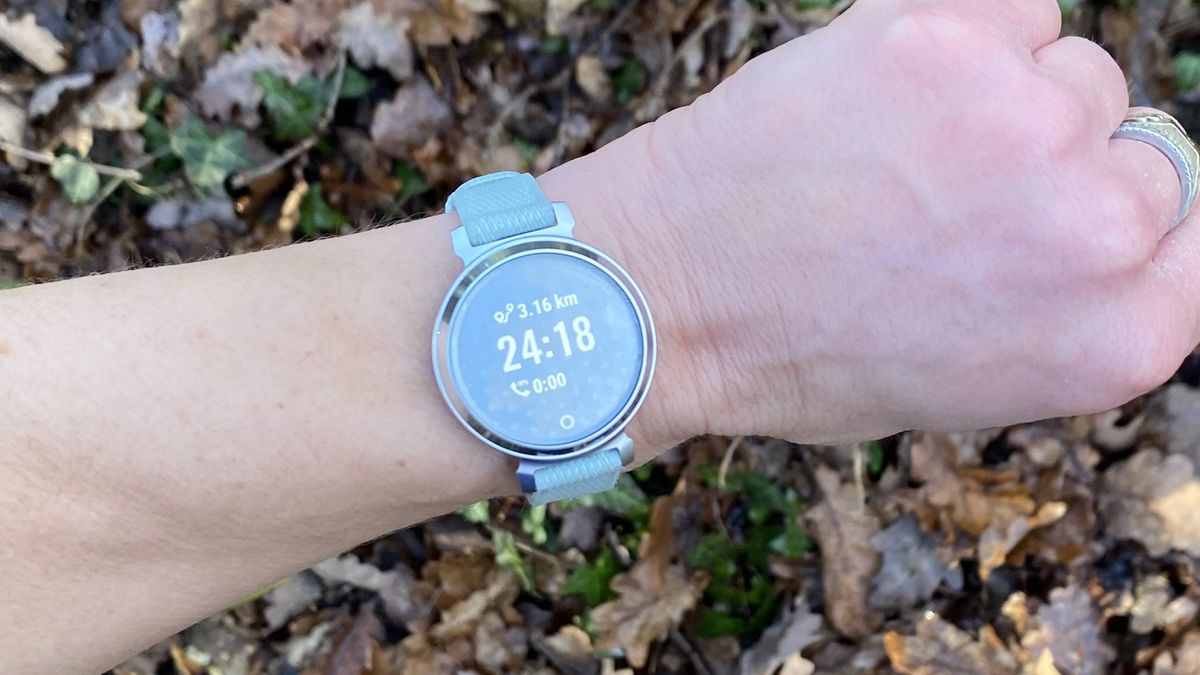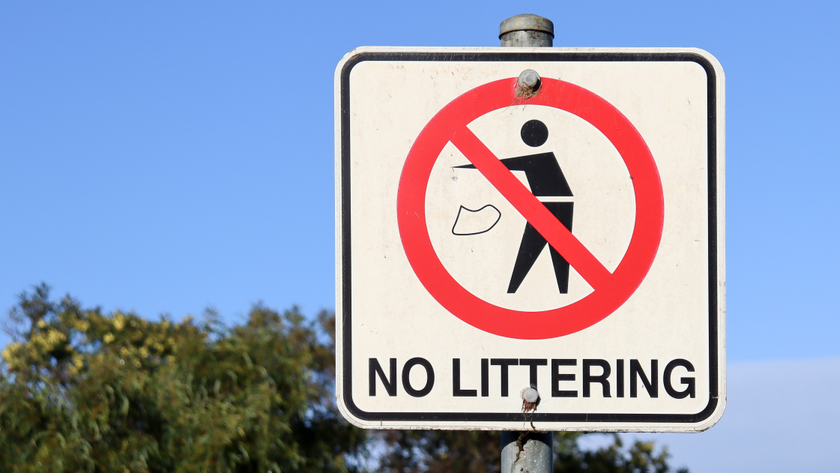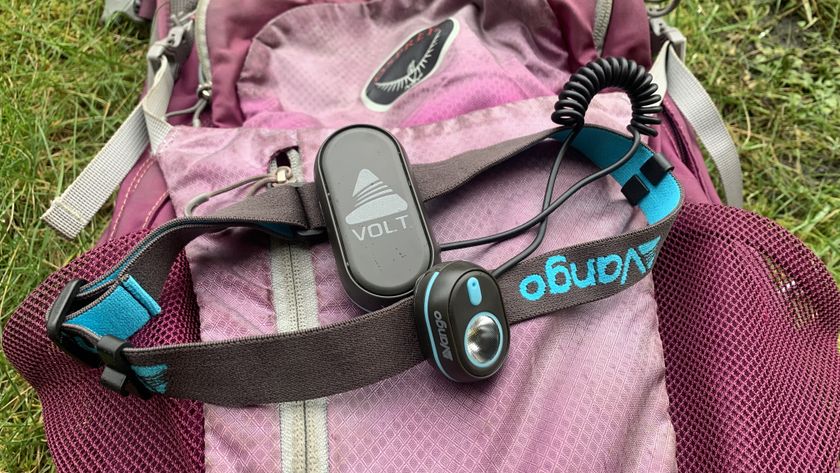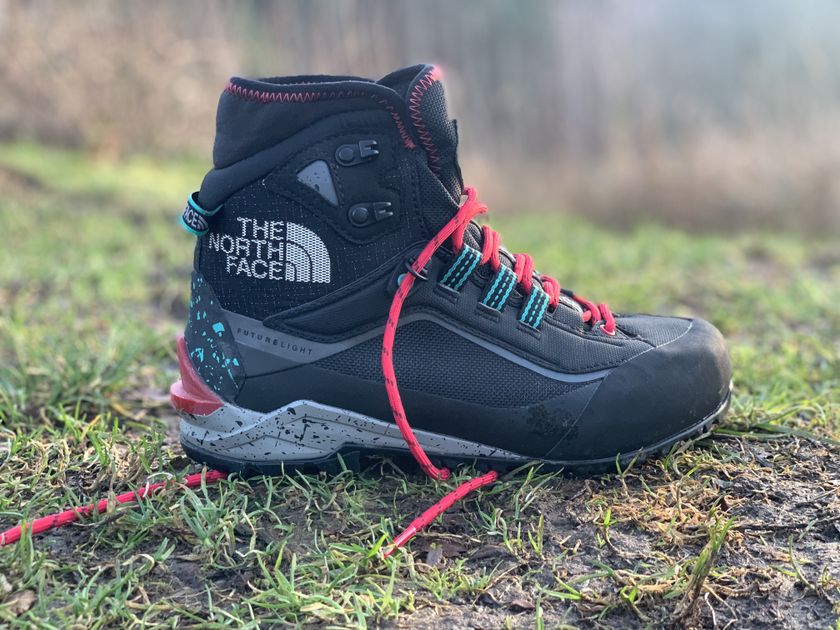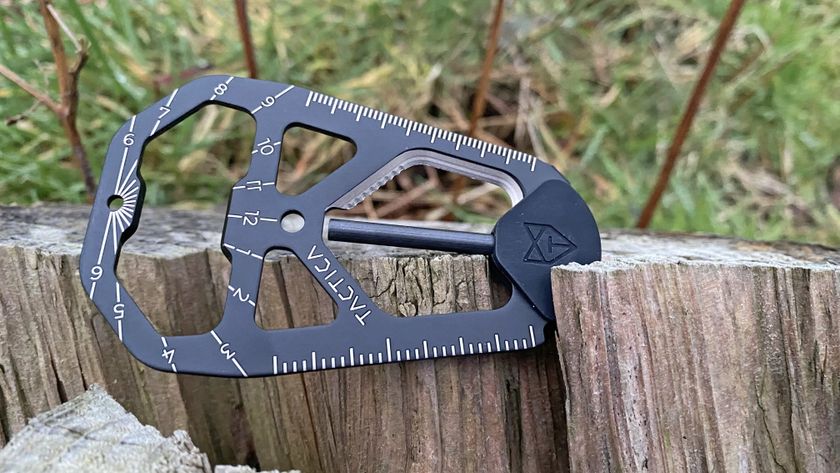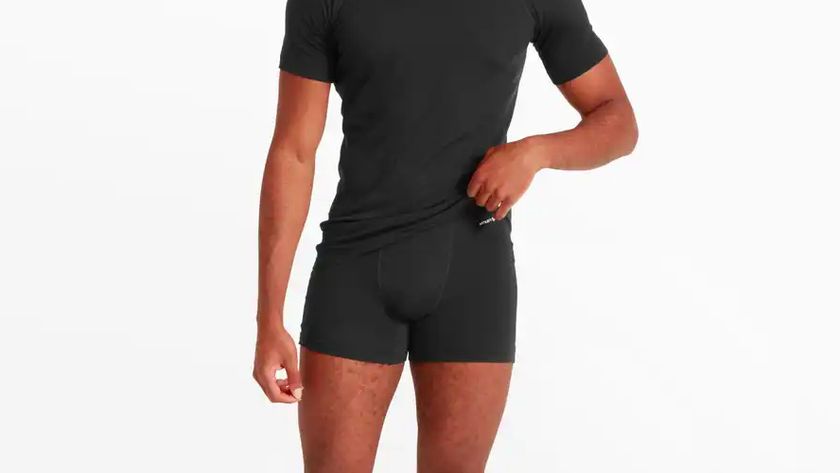Advnture Verdict
The Garmin Lily 2 is a beautiful female-focused sports watch that's very similar to its predecessor the Lily, but with a few upgrades. The most obvious are the sleep tracker and cycle and pregnancy tracking making it even more practical for its feminine audience. Unfortunately, you still don't get built-in GPS - or music storage. You’ll need to rely on your phone for that.
Pros
- +
Feminine everyday design
- +
Doesn’t stand out as a smartwatch
- +
Selection of pastel colors and interchangeable straps
- +
Decent battery life
- +
Morning report and health summary
- +
Safety tracking features
Cons
- -
No built-in GPS
- -
No music storage
- -
Lacks color display
- -
Light-colored straps mark easily
- -
No pause button
You can trust Advnture
Meet the reviewer

Lucy is a fitness journalist, personal trainer, nutritional adviser, and children's fitness specialist with over 20 years of experience. She has written for publications including Women’s Health, Women’s Fitness, The Times, The Guardian and Runner's World, and knows what to look for in a fitness watch designed for women.
Garmin Lily 2: first impressions
Designed with women in mind, the Garmin Lily range was launched in January 2021 as an attempt to soften Garmin’s image as a hardcore sports watch brand. Much like in the original Lily, the Lily 2 is tiny, elegant and looks gorgeous.
In terms of overall design, the Lily 2 is very similar to its predecessor. It comes standard with a 34-millimetre liquid crystal screen and a LCD display which is hidden behind a decorative metallic face subtle pattern until activated. There’s a choice of slim straps too.
• List price: from $249.99 (US) / £249.99 (UK)
• Case size: 25.4 mm x 21.3 mm
• Weight: 24.4 g
• Display type: LCD
• Water rating: 5ATM
• Best use: running, swimming, cycling, triathlon, gym, dancing
The silicone strap option comes in two colorways: Cream Gold/Coconut, and Metallic Lilac. The fabric band version comes in Cream Gold/Coffee and Silver/Sage Gray band. You also have the option of a leather strap which comes with three different bezel options: Cream Gold, Silver, or Dark Bronze. Both the fabric band option and leather version come with Garmin Pay, which allows you to make a contactless payment using your watch.
For this review, I've been using the fabric Lily 2 in silver with the classy Sage Gray fabric band, but I also have the option to change the band giving me more flexibility. Replacement bands are available from $39.99, and have a quick release mechanism that makes changing them a breeze.
Controlled entirely by a monochromatic touchscreen, the watch's interface is smooth and super responsive. I didn't immediately notice the home button (a small circle at the bottom of the screen) but once I did, it was easy to select and view activities, check daily activity stats, and move through watch faces and settings. When you tap the screen, you'll feel a brief buzz of haptic feedback confirming your choice. I found it helpful to increase the display timeout from the default 'short' to either 'medium' or 'long'. If you don't, the screen turns off too quickly and you have to start the whole tap and search process again.
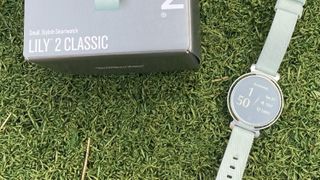
The upgrade to an aluminum watch case means the watch is super light, weighing in at a mere 24.4g. And at just 14mm thick, it's so slim and comfortable that you'll easily forget you're wearing it. Not only does it slide easily under your cuffs but under bedclothes too. If you want to make the most of the sleep monitoring, that's quite a big deal.
Unlike some Garmin watches, the Lily 2 doesn't have internal storage for music, podcasts and audiobooks, but you can control music on your paired phone from the wrist. It also doesn’t offer Bluetooth connection to gym equipment either, but you can control and read your phone notifications, which I found came through to my wrist almost instantly.
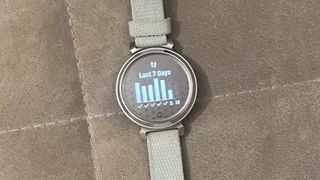
Something else to shout about is the Garmin Pay contactless payments, which are new to the Lily 2 but have been around for years on other Garmin watches. You simply load up your compatible credit card to Garmin Pay and you’re good to go. I was fine with my Barclays account, but it’s worth checking the list of supported banks first before offering to buy a round of coffees.
To track 24/7 heart rate data, all Lily 2 devices feature Garmin’s Elevate Gen 4 heart rate sensor, an optical (PPG) sensor built into the back of the device that detects your heart rate by shining a green light onto your skin and analyzing what's reflected back. This isn’t the newest Gen 5 sensor, which is currently available on the likes of the Fenix 7 Pro and Epix Pro, but I found it still provided reliable and accurate readings when at rest and during workouts. I wore the watch mainly for my resistance and HIIT workouts and set up alerts for my heart rate zones. If my heart rate got too high or too low I got a handy alert to either calm it down, or rev it up.
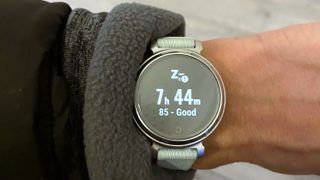
Beyond measuring my heart rate, the watch also accurately tracked all the basics of health and fitness, including my steps, distance, calories, respiration, stress, sleep, and sleeping blood oxygen saturation (SpO2).
Dedicated to women, the watch also features female health tracking and pregnancy tracking, offering useful notifications and predictions. These are also available in other Garmin watches, but are positioned much more prominently in the Lily's interface. I found that the more I logged data over time my cycles became more detailed and my period and fertility reminders and predictions became more accurate. Finally, I could start to track my hormones and associate them with certain phases and feelings. If you’ve ever felt tired during the second part of your menstrual cycle, there’s a reason. It’s called your luteal phase. Just knowing this helped me plan my training no end.
The Body Battery feature on the watch helped too. Known as one of Garmin’s most popular wellness tools this was a fairly accurate representation of my subjective energy levels and told me how well I recovered after each workout by calculating my body’s energy reserves throughout the day. Each day I checked my score which was between 1 and 100; the higher the number, the more energy I had - and the harder I could push during my session.
Speaking of batteries, the Lily 2's battery is charged with a simple magnetic clip on a USB-C cable, which is different to the chargers that plug into the back of most Garmin watches. The device lasted around four days between charges, with multiple workouts per day and above-average usage. During my tests it took just over an hour to charge fully.
Garmin Lily 2: on the roads
The Lily 2 is super straightforward to use, and would be ideal as a first sports watch. Key health and training statistics (such as heart rate and sleep stages) are available as 'glances', which you can scroll through by swiping up or down on the watch face. Tapping any info will take you to a more detailed view where you can see how the current day's figures and any additional information like the intensity of your workouts or if you’ve hit your daily step goal. You can also view more detailed graphs via the Garmin Connect app, or the Garmin Connect website on your desktop.
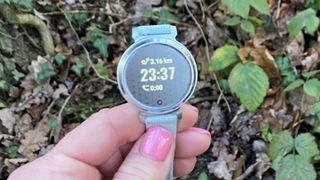
Activity tracking is a simple matter of hitting the home button, scrolling to your preferred sport, and hitting start again. After choosing a sport (there are 18 in all, including the newly added indoor rowing, and dances such as Bollywood, EDM, Afrobeat, hip-hop and Zumba) you can view your duration, heart rate, and workout dependant stats such as distance and stroke cadence. There's no on-board GPS, so the Lily 2 relies on a Bluetooth connection to your phone to track your pace and route during outdoor activities. It took a moment to connect, but I did find it surprisingly accurate.
The Garmin Lily 2 can notify your emergency contacts if it detects an incident during certain activities, which is another feature that's available on other Garmin devices but not on the original Lily watch. All I had to do was allocate three people to be my emergency contacts, and they could follow my route via Garmin LiveTrack. They would also be notified if my watch detected that I'd fallen during an activity and I didn't dismiss an alert on the watch within 15 seconds.
Similarly, if I felt unsafe, I could send a notification manually by tapping the screen repeatedly until a notification appeared. I tried it, and my partner got an automated message with my name and GPS location. I also received a message indicating that my contact had been informed that I was in danger.
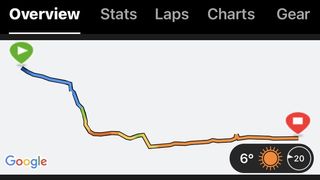
At the end of your workout, you'll see a summary of your stats including your heart rate, calories, speed and distance. For more graphs and zones, you’ll need to visit the Garmin Connect app, where you can browse through even more historical data, view detailed maps of your runs and rides, and get an overview of the last seven days.
The app also allows you to make connections with friends and family so you can encourage one another, leave comments on activities, and engage in friendly competitions. You can work towards virtual badges too, which are earned for feats like achieving a personal best, climbing the equivalent of Everest over several weeks, or recording an activity on Christmas Day. The badges don't give you any tangible benefits, but are in their own right motivating - and there are online communities dedicated to finding ways to get as many as possible.
Like all Garmin watches, the Lily 2 works best when worn day and night, so it can help you strike a good balance between workout and recovery. Sleep tracking works well, and I liked that the watch accurately detected when I fell asleep (unlike some GPS watches, which mistake time spent reading in bed for light dozing).
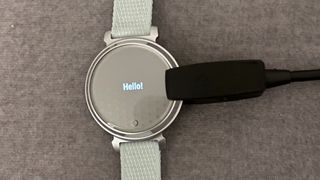
It doesn’t just give you the hours slept though - one of the biggest new features in the Lily is the addition of Garmin's sleep score, which rates your sleep based on factors such as duration, restlessness and how much time was spent in various sleep stages. Sleep score exists on other Garmin watches and is a common feature on most wearables, but this is the first time it's coming to the Lily 2 watch.
To access, swipe right and click on the duration you’ve been asleep. This will then lead you to your sleep score which is displayed as a simple excellent (90–100), good (80–89), fair (60–79), or poor (below 60).
More detailed graphs can be found in the Connect App where you can access stats of your average resting heart rate, average SpO2 (a measurement of how much oxygen in your bloodstream compared to its maximum capacity), respiration rate, heart rate variability (HRV) and sleep consistency.
The watch will take a few nights to establish a baseline, then inform you if your HRV becomes usually low or high. Low HRV can be a sign that your body is under more stress than usual, which might be due to illness or increased recovery needs from intense workouts.
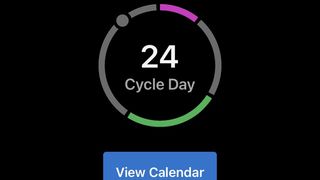
Throughout the day I also received move alerts on the hour, every hour and I tracked my water intake on the watch too by simply pressing the add button every time I had a glass of water. With its 5ATM water resistance (safe to 50m deep) I could also wear it to shower, bath or swim, and it counted my lengths while in the pool too.
All in all, the Garmin Lily 2 is an excellent sports watch and the extra female-focused features like cycle and pregnancy tracking certainly make it more appealing to ladies who like and need a 360 of their entire health and well-being. It’s tiny and looks gorgeous and has plenty of options for those looking to get started on their fitness journey - or grow their fitness levels.
It's a shame that there's still no built-in GPS - If you want that whilst still wearing a stylish watch, you might be better served by the Withing Scan Watch 2 and Garmin Vivomove Trend. Both look less clunky than most smartwatches whilst quietly tracking all your personal and basic metrics behind the scenes - however, they don’t resemble a piece of jewellery like the Lily 2 does.

Lucy Miller is a journalist, level 3 personal trainer, nutritional advisor and children’s fitness specialist. She holds fitness qualifications from NASM Training and Premier Training International and has been a fitness journalist and fitness (and cover) model for over 20 years. Since going freelance in 2014, Lucy left Men’s Fitness Magazine to write for an abundance of top consumer titles such as Women’s Health, Women’s Fitness, Waitrose, The Times, The Guardian and Runner's World.
